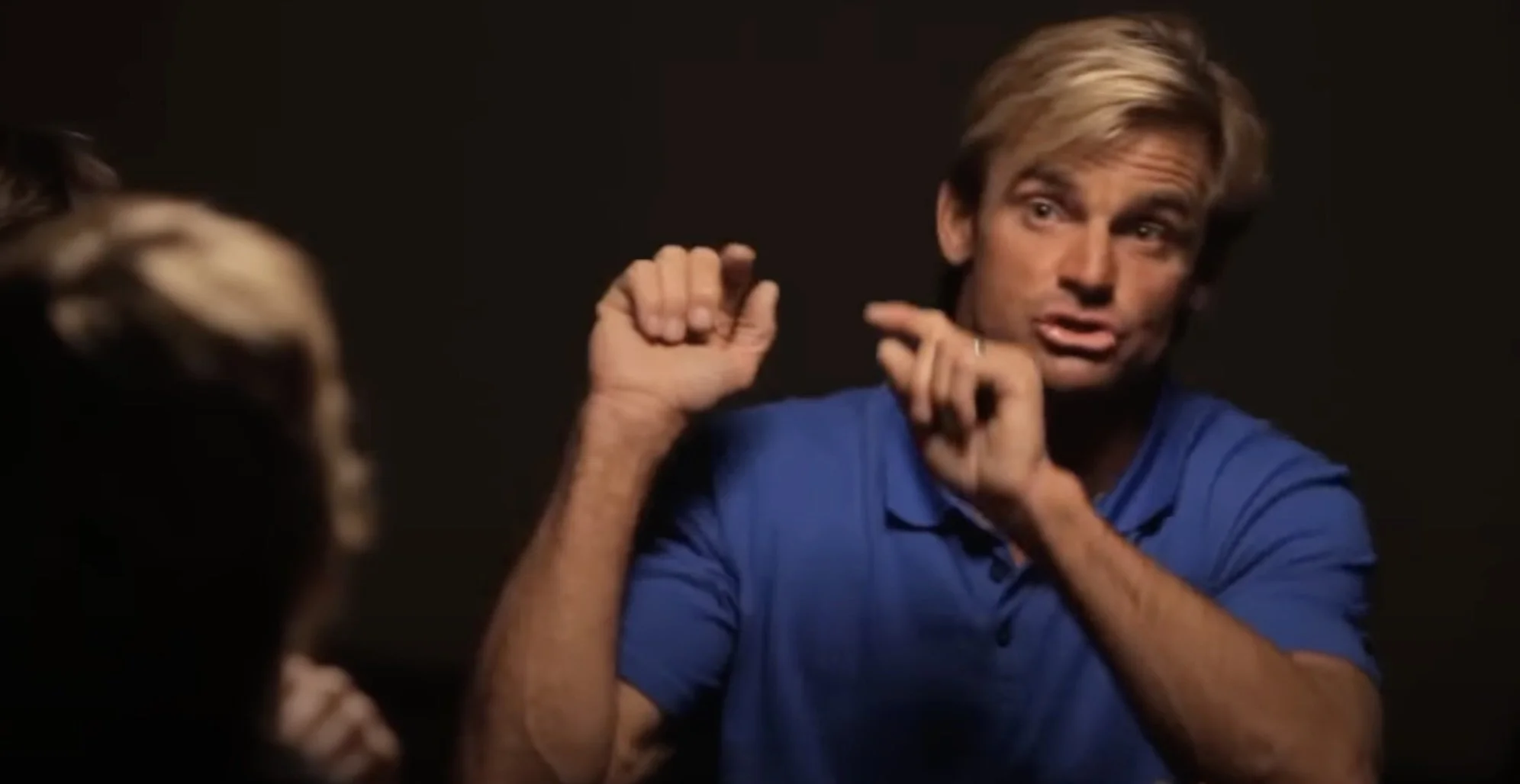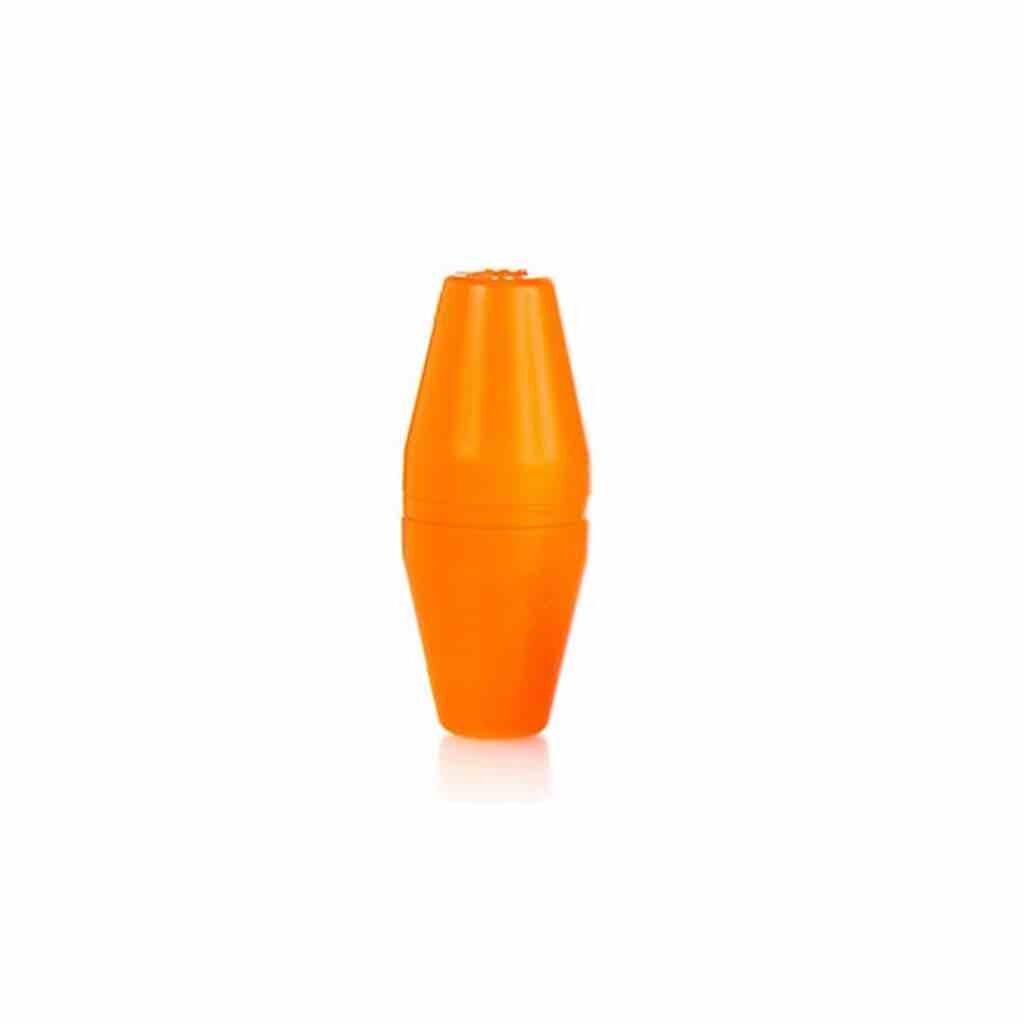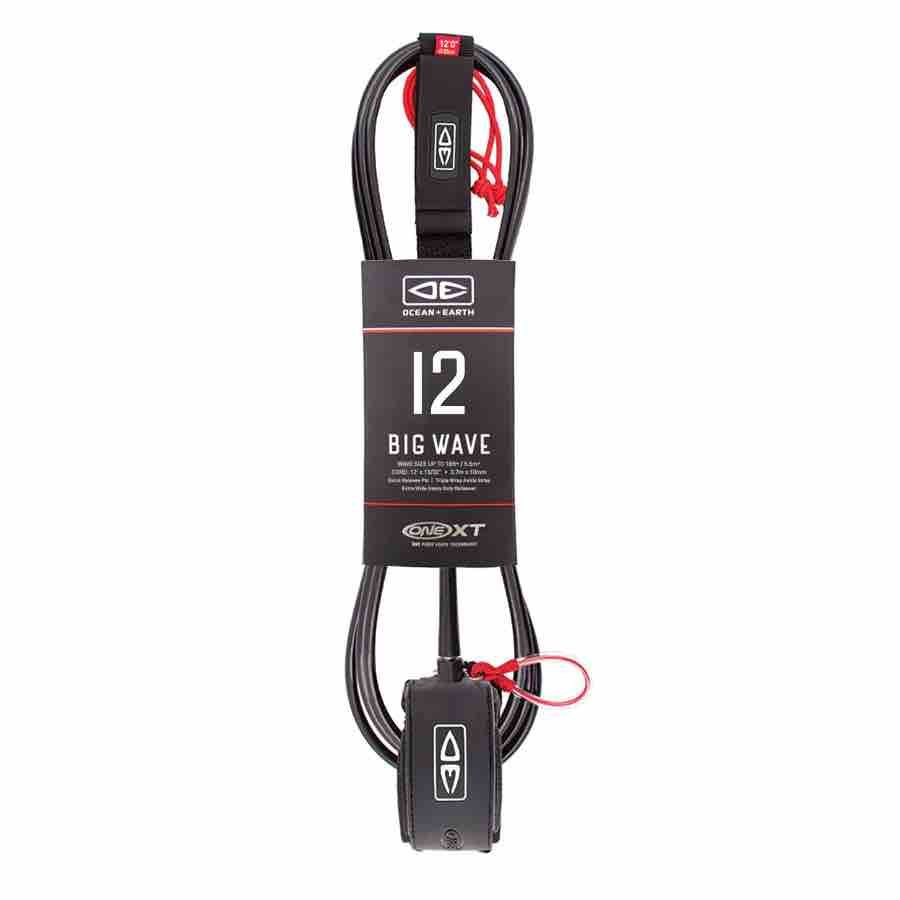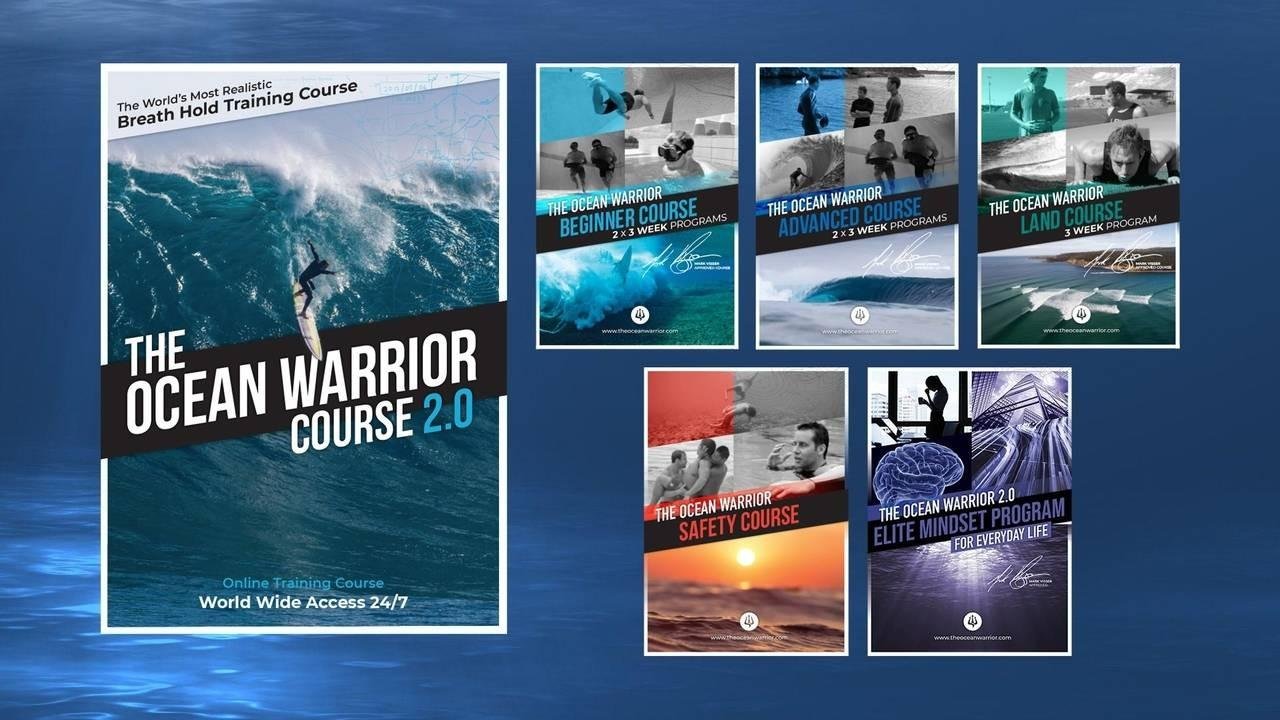How big wave surfers escape under water.
17 big wave wipeout tips you want to know.
Surfers who ride the biggest waves in the world can take a wipeout like no one else, but their (underwater) techniques are little known to the rest of the surfing community. Most of these techniques are applicable to all levels of surfing.
So we made this article to share (a fraction of) wipeout survival tips from some of the best big wave surfers in the world.
So, if you've ever wiped out and thought it was the end, this is for you.
Ready? Let's drop in.
1) Breathe up before a set.
When a set shows on the horizon, breathe calmly and deeply from the bottom of the belly. (Freediving or Yoga will teach you how to breathe from the diaphragm)
Relax. Focus. Breathe.
Fill your bloodstream with fresh oxygen and lose as much C02 build-up as possible.
Your bloodstream is like a third gas tank for oxygen - The lungs being the first and the second.
So, if the lungs and the bloodstream are filled with fresh air, your body is topped off for maximum performance. Fully charged for whatever will happen next.
(When you start paddling for the wave, breathe normally again or use one of the techniques taught in the Ocean Warrior Course or the Surfing Paddling Academy.)
2) Wiping out like a pro: Pencil dive
Most wipeouts leave little control over when or how you eat it. But in some cases, simple techniques can make things a little easier.
For example, you are bailing at take-off or getting launched by the lip. Dust off your kindergarten super skills:
The Pencil Dive.
As soon as you're airborne, make your body as long and vertical as possible. Be a pencil.
Penetrate the surface (hopefully feet first) and shoot deep past the underwater turbulence.
The white water passes overhead without touching you. Smile.
Enjoy a blissful, smooth swim back to the surface. Like nothing ever happened. Grab your board and catch the next one.
For obvious reasons, pencil diving on (extremely) shallow reefs is a sub-optimal choice.
3) Going Over The Falls: Snatching a sip of air (Twiggy Baker)
If a pencil dive fails and you don't penetrate the surface, you will likely go "over the falls."
The wave lifts you up. Oh, that beautifully weightless feeling. So peaceful, so tranquil.
Wrong.
The longer you go up, the harder the lip will crush you into the bottom of the wave, maybe even into the reef, sand, or rock bottom.
It's brutal, but it's also fun because going over the falls comes with a small perk…
When you are being sucked up and over, right at the top of the wave, there is only a little bit of water between your head and the surface. It gives you a split second to pop your head/mouth/lips out of the top of the wave for a quick sip of air.
It is a risky bet but well worth it.
It comes down to perfect timing, but we figure this out instinctively for most surfers.
Here's a horror story by Grant Twiggy Baker. This technique helped him survive a brutal belly flop at Pea'hi. It pushed all the air out of his lungs right at the start of a wipeout.
Would he be alive if he didn't get that extra sip of air?
4) Bail Barrels Close to the Curtain
Kelly Slater uses a similar technique when ditching his board in the barrel. He explains it in this interview with Joe Rogan, right at the beginning at 0:50 seconds.
It comes down to trying to fall close to the curtain so that all the water falling down with the lip pushes deeper than the turbulence. It seems that he is suggesting doing this in a rolling movement instead of a vertical jump.
Clearly, most barrels are very shallow, so jumping off feet first is not the smartest choice.
5) Jump into the explosion. (Nathan Florence)
This is a brilliant, little-known technique found on Nathan Florence’s YouTube channel.
When he goes over the falls, he throws his body out as far as possible toward the direction of the beach and foam, aiming to land on top of the exploding foam.
If that is successful, he'll have a better chance of staying higher in the whitewater than being drilled deep down by the lip.
If you're higher in the foam, the hold-down can be shorter, and the swim back to the surface will likely be shorter. It also reduces the chance of a two-wave holddown.
All of that could still happen, but you just put yourself in a better position to reduce the risk.
6) Check your head & pull your hair (Andrea Moller)
Now that the foam has caught us, the hold-down begins. The first order of business is to protect yourself by curling up in a ball.
Wrap your upper arms around your head, hands on your neck, and elbows/lower arms covering your face.
Protect your brain from hitting the bottom and smashing into reefs, rocks, sand, surfboards, or other people.
In really, really big waves, the violence is so intense that it feels like Poseidon himself is trying to debone you. Tuck in all limbs and hope you win this tug of war with the mighty lord of the seas.
The first female surfer at Pea'hi, Andrea Muller, talks about not just holding her head but grabbing her hair and pulling it in to protect her neck from being whiplashed.
7 Body Scan - Shut it all down
Now that you are underwater, rolled up in a ball, and getting tossed, it is time for the second item on your underwater checklist:
Shut down all engines.
Scan your body from toe to top and check for unnecessary tension, cramps, or movement. The idea is to relax as many muscles as possible.
Here's your checklist for muscles that might be cramped or moving but don't need to.
Every body part not moving or cramping is energy not burned = less oxygen turned to C02 = less urge to breathe.
Cramped Toes
Kicking Feet
MovingLegs
Clenched Butt cheeks
Swirling Arms / Overly tensed arms when balling up
Squinted eyes
Pressed lips
Grinding teeth
Tensed Jaws
An added benefit of body scanning is that it helps to keep your mind occupied, so you won't have time to focus on how desperately you want to breathe. A focused mind makes it much easier to stay calm, relax, and use less oxygen.
Body scans provide immediate results. You'll be surprised to see how often your legs are kicking for no reason. Shut it down early in your hold-down and enjoy the rest of the ride because your oxygen will last longer.
8 “Let the board tow you” - Laird Hamilton
This tip comes straight from one of the most legendary, seasoned, and innovative big-wave surfer in surfing history: Laird Hamilton. Of all the wipe-out survival techniques, this is by far the least known yet most effective (and most fun).
Although balling up protects your body, all those tense muscles burn a lot of energy, sapping the oxygen supply.
The wave has more grip on a ball-shaped human and will push it deeper, especially if you use leashes that stretch a lot.
In this video by surfline, Laird talks about the early days of surfing Jaws.
Trying to save his leashes from breaking, Laird wraps his feet around his leash, extends his body and his arms above his head. This minimizes resistance by letting the leash tow him out of the impact zone.
Why “letting the board tow you” is such a brilliant technique:
It saves a lot of energy. You can relax all the way.
Your board pulls you close to the surface. Minimize swimming.
You’re out of the impact zone. Or most of it anyway.
You come up close to your board.
Less chance of breaking your leash.
Letting the board tow you underwater is an incredible technique and easy to learn. It’s like an underwater escape tunnel traveling long distances underwater and getting yourself away from the impact zone and close to the surface.
(It works best with heavy, big boards on long leashes)
9 “Land on the reef like a cat.” - Nathan Florence
Some wipe-outs take you all the way to the bottom, especially when you are going over the falls.
Nathan Florence explains in the same video how he turns around so that he can land on his hands and feet like a cat.
It’s better to sacrifice damage to hands and knees for the sake of protecting everything else.
10 Run across the reef
When you hit the reef, and the wave keeps dragging you along, it’s better to “run” over the reef instead of resisting.
Feet on the reef could hurt, but it will help you prepare to push off in the right direction when the wave is letting go.
Go to your happy place, relax and wait for your victorious rendez-vous with the surface.
11 “Climb your leash.” - Frosty Hesson
If you don't know what's up, you can use your leash to climb back to a world full of oxygen.
Reach down to your ankle, gently grab the cord, and gradually climb back up to the surface.
This is how Frosty Hesson explains it. (He is the former surf coach to Jay Moriarity; see the Hollywood movie Making Mavericks.)
Benefits of climbing your leash:
Straight to the surface. No swimming the wrong way or at an angle.
The buoyancy of the board will help pull up.
Other surfers see where you are. The board is sticking vertically out of the water and often waving from side to side as the surfer climbs up the cord hand over hand. (The swaying board is known as “Tombstoning”)
When you come up, the board is right there. Just climb on and get back to the channel/the boat/your mom.
Con’s of climbing your leash:
If it breaks, it will be much harder to find the surface.
When you get to the surface, thanks to breaking your leash by climbing it, you have the honor of swimming the rest of the way home. (And taking some sets on the head while you’re at it.) Do you know how to body surf? Now is the time to do it.
12 “Exhale before you inhale” - Mark Visser
There is an old saying that it isn't the first wave that kills you... it's the third, fourth, fifth, sixth, etc etc.
Wipe-out survival is not just about making it through your first pounding. What you do in between waves makes a big difference.
Together with “let the board tow you,” this is the best tip in this entire article:
“Exhale before you inhale”, shared by Mark Visser on his YouTube channel a long, long time ago. Long before he created the “Ocean Warrior Course”.
Inhaling when you surface is just instinct. However, it is suboptimal. Instead, dump your old CO2 buildup first, before inhaling new, fresh air.
Exhale first and dump all that old air. It sets you up for much longer endurance when going through the next underwater ride. And the next one. And the next one.
13 Don’t use your legs
Your legs are the biggest muscle in the body, so every time you kick, energy is lost, sapping away your precious oxygen.
Kicking your legs to tread water takes a lot of energy. But do you really need it? All that you need is to reel in your surfboard by pulling your leash. If you are wearing floatation, you really don’t need to kick at all. Same thing for a wetsuit. It will make you buoyant enough minimize leg movement.
Even in board shorts, you can use your legs a lot less than you’d expect. If you don’t kick, or at least not as hard and as often, your head will be lower to the surface, but your mouth can still suck in plenty of air.
(Unless your XXXL surf where the impact zone is covered in super thick foam, but at that point you are probably wearing flotation and hopefully have ski’s coming in to pick you up)
When “swimming” around in the impact zone, you will likely take a few more waves on the head. So everything you do at the surface counts just as much, if not more so as what you do under water.
(Sometimes you need to use your legs to swim to your board or a rescue sled. Or maybe you need to body surf back to the beach and you need to kick to get into the wave. Those are all short, explosive uses of energy that get you to a safer place, so it makes sense.)
14 Swim deep
Deep water big wave surf spots are great for deep swims to escape underneath the beast.
Since your 10+ ft big wave gun probably has a 12ft or 15ft big wave leash on it, you'll have the option to swim down under the incoming foam and avoid the turbulence altogether. Start early because if you're not deep enough, you'll swim straight into a hold-down.
Once you feel the wave pass over you, your board starts to pull (if the leash doesn't break). Unless your strategy is to get pulled back to the beach fast (for instance, using Laird's "let the board tow you" technique), you probably want to maintain your position as best you can.
Activate: Sea-Anker Arms!
Spread your arms and legs, and try to create as much resistance as possible to limit the loss of distance.
But sometimes there are no options left: the impact of the lip/white water is just too close or too huge to swim deep.
Now what?
15 Don’t swim deep - Put your face down in the foam
In a broken leash scenario at shallow spots, instead of swimming deep (into the bottom), you can just not swim at all. Just lay face first in the water and when the foam hits you try to launch yourself backwards with it, as demonstrated by Nathan Florence in the video above.
He let it throw him back and up, trying to go up high in the white water. By staying so close to the surface, the hope is that you’ll be higher up in the white water.
16 Broken eardrums: navigate with stringer
Breaking an eardrum is extremely painful and dangerous. There are very few ways to avoid them. (Equalize like a diver)
When your equilibrium is fucked, so are you. You’ll see things double, triple, quadruple; everything is spinning, and you don’t know what way is up.
Surfers that rupture an eardrum often swim back down because they are so disoriented.
If you wear an inflatable vest, this might be a good time to pull it and signal for help. Hopefully, there is a rescue sled nearby.
Chris Bertish, die-hard waterman who does the most unbelievable things, like Stand Up Paddling across the Atlantic unassisted or wing foiling from California to Hawaii to name just a few, shared a very practical tip for broken eardrums.
Because you’ll see everything double (or more), it’s hard to see where to go.
If you still have your board, put your chin on the stringer. Now you can feel whats down, and see what’s forward, by using the stringer like an big compass arm.
Next step: Aim your board to where you want to get to shore.
You might see three stringers, but at least you can point them to where you want to go to figure out the direction. Go to the hospital afterwards. Broken eardrums are no joke.
Adam Bloomer can tell you what it was like when he ruptured both ear drums on a “small day” at Mavericks.
17) Final thoughts: The 30% rule
Here is a simple old-school guideline: go in before your burned through all your energy.
Rule of thumb, go in before your energy level is below 30%. Staying out until you have nothing left in the tank is asking for trouble.
A lot of things can go wrong even when you’re simply paddling back to shore. Young eager surfers tend to burn it all in the water just to maximize wave count. More seasoned, older surfers know what injuries can come of that and time their exits better: Surf to life an other day.
In the ocean, things can go wrong quick, especially if you don’t have any reserves left to deal with it.
Imagine, being exhausted but:
you get caught inside by a sneaker set?
you can’t get out of the impact zone? Now you'll have to take a whole set on the head. Or more. Fun.
What if you snap your leash? Are you up for the long swim back to shore without a board? Wait… did it just get dark?
What if the current is shifting?
What if someone else gets into trouble and they need your help?
When we are exhausted, we make poor decisions and are more prone to injury. Is that really worth those last few waves?
Recovering from an injuries takes months, making you mis out the big wave the season altogether. Tons of waves gone, unridden. Grumpy score 100.
Conclusion
Wie-outs are an inevitable part of surfing, so knowing some of the underwater techniques used by big wave surfers can help any surfer turn those scary hold-downs into fun underwater rides on the flip side of the surface.
This article is just about wipe-ing out, but of course there is a lot more preparation and training for big wave surfing that helps deal with under water challenges.
Read more about that in the next article
“Surf wipe-out training on land.”
(If you can’t wait and want to get into breath hold and underwater training, try is a great all round course to work on both mindset and breath holds. Let us know what you think.
This is by no means an exhaustive list. It’s made to expand over time, so if you have any suggestions, corrections, or requests, please let us know in our contact form so we can add or edit this document. Or just hit the comments wherever you are reading this.
This article links to a couple of training programs and products. We have affiliate agreements with some of them and might earn a commission If you buy something. We only support products and services and services that we’ve tried and tested and believe to be high quality and useful for other surfers.
If you find this article helpfull, please use our links so that we can earn some $ to help us create more content like this.












